When we add beautiful flowers to our vegetable garden, it also benefits the vegetables we grow.
Flowers help reduce pest infestation and attract pollinators beneficial for the vegetables. But before adding these flowers, we must know that not all flowers will be beneficial.
So, in this article, We have covered 15 flowers that you can add to your vegetable garden.
Marigold
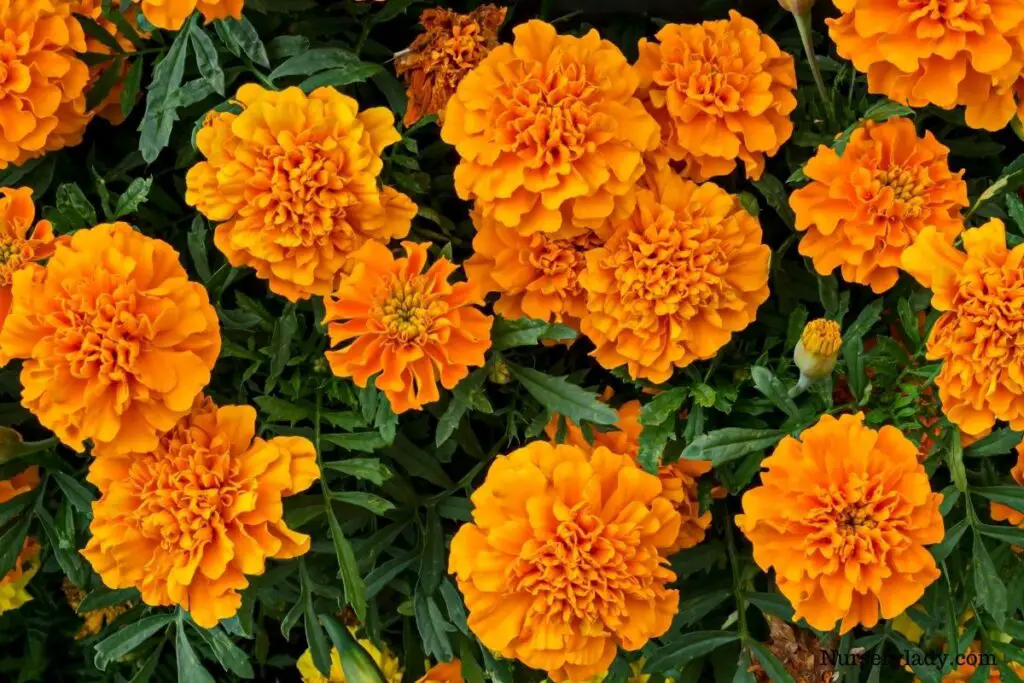
Marigolds are cheerful flowers that complete their life cycle in a single growing season.
They are fast-growing and achieve maturity within a few months of planting. They are well-known for growing near vegetables like tomatoes, basil, broccoli, cabbage, etc.
Light: Grow your marigold in a sunny location for healthy and best blooms. If you keep them in a shady area, the plant will become leggy and flowers less.
Watering: Water young marigolds regularly to keep the soil evenly moist. They are drought tolerant when matured but would bloom better with proper watering. Do not overwater.
Fertilizer: Marigold does not need much feeding and can thrive without feeding. If the soil is extremely poor, you can feed it with a balanced fertilizer once in the spring.
General care: Marigolds thrive in hot temperatures and have better blooms in cool temperatures. They can grow in all humidity ranges, but too much humidity may lead to fungal problems.
Calendula

Calendula produces flowers in yellow, orange, pink, and cream colors. They are fast-growing plants and are known for their cheerful blooms.
They are grown in many vegetable gardens, in containers, etc. They help attract pests with their sticky sap and save crops from damage.
Light: Calendula prefers bright light for best blooms. They would appreciate some shade in the hottest months of summer.
Watering: Water young calendula plants regularly to establish strong roots. Once matured, occasional watering is good enough for their good health.
Fertilizer: Feed calendula with a balanced fertilizer if the soil is poor. Do not overfeed; it can make the plant leggy. If the soil is rich, it can thrive without any feeding.
General care: Calendula thrive in mild temperatures and may suffer in high temperatures. Remove debris to avoid slug damage.
Chamomile
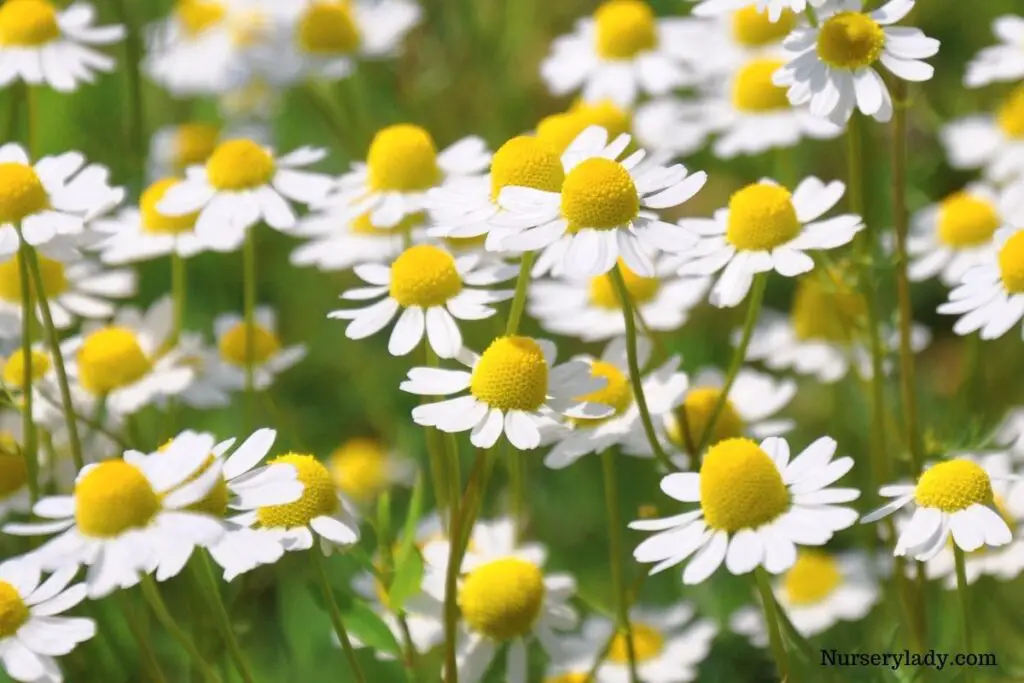
Chamomiles are known for their medical qualities. They produce daisy-like flowers and are fast-growing.
They will benefit vegetable gardens by attracting beneficial insects and pollinators. They are easy to care for and a great option for container gardening.
Light: Chamomile thrives in full sun and grows well in partial shade. They need some shade from the afternoon sun in hot summers to avoid sunburn. They will grow abundant blooms in full sun.
Watering: Chamomile can be watered in regular intervals making sure the soil dries out between watering. Young plants need more frequent watering to establish strong roots.
Fertilizer: Chamomile does not need any fertilizing. Feeding can make them leggy and inhibit growth.
General care: Chamomile can thrive in high temperatures up to 100°F. They can thrive in high humidity too. They like rich, organic soil.
Nasturtium
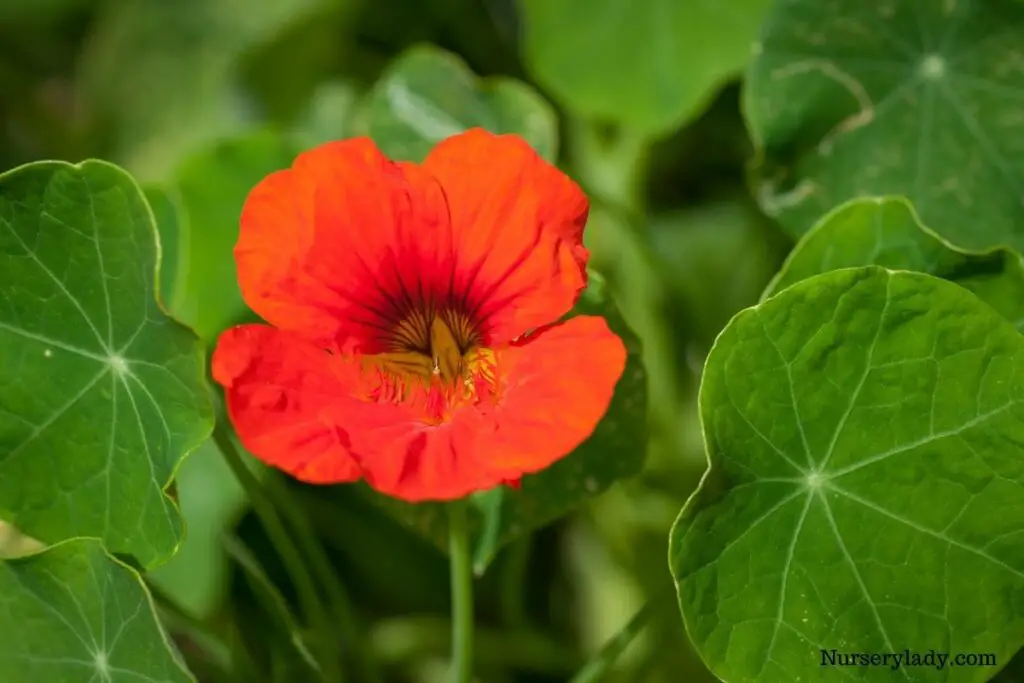
Nasturtiums are fast-growing and low-maintenance plants with beautiful flowers.
They have bright green rounded leaves with blooms poking out of masses of leaves. They have a strong odor that helps repel pests, due to which they can be a great companion for vegetables.
Light: Nasturtium grows well in full sun to partial shade. They bloom best in full sun, but they need some shade in intense summer.
Watering: Nasturtium likes regular watering and likes evenly moist soil. They can withstand some dry conditions, but long periods of drought can reduce flowering.
Fertilizer: Nasturtium does not need feeding to thrive, and fertilizing will boost leaves growth but inhibit flowering. They can be fertilized only if the soil is poor.
General care: Nasturtium likes warm temperatures and average humidity. They will struggle in frost and usually do in frost, completing their life cycle in one season.
Looking for gardening supplies? We have tested 100's of products before recommending them to you guys. Check out our best pick below:
| Image | Gardening Supplies | Best Price? |
|---|---|---|
 Top
Top Top
Top | Raised Garden Bed Kit | Check On Amazon |
 | XLUX Soil Moisture Meter, Plant Water Monitor, Soil Hygrometer Sensor for Gardening, Farming, Indoor and Outdoor Plants, No Batteries Required | No Results |
 Top
Top Top
Top | 82 Pcs Garden Tools Set and Extra Succulent Tools Set | Check On Amazon |
 | Joeys Garden Expandable Garden Hose with 8 Function Hose Nozzle, Lightweight Anti-Kink Flexible Garden Hoses, Extra Strength Fabric with Double Latex Core, (50 FT, Black) | No Results |
 Top
Top Top
Top | Dual Chamber Compost Tumbler | Check On Amazon |
 Top
Top Top
Top | Sunnyglade Plant Stakes | Check On Amazon |
 Top
Top Top
Top | Organic Cold Pressed Neem Seed Oil | Check On Amazon |
 Top
Top Top
Top | Mighty Mint Gallon :-Insect and Pest Control Peppermint Oil | Check On Amazon |
 Top
Top Top
Top | Scotts DiseaseEx Lawn Fungicide | Check On Amazon |
 Top
Top Top
Top | Jacks Classic 20-20-20 All Purpose Fertilizer | Check On Amazon |
 Top
Top Top
Top | 30,000 Seeds Pollinator Attracting Wildflower Mixture | Check On Amazon |
 Top
Top Top
Top | Survival Vegetable Seeds Garden Kit-Over 16,000 Seeds | Check On Amazon |
Borage
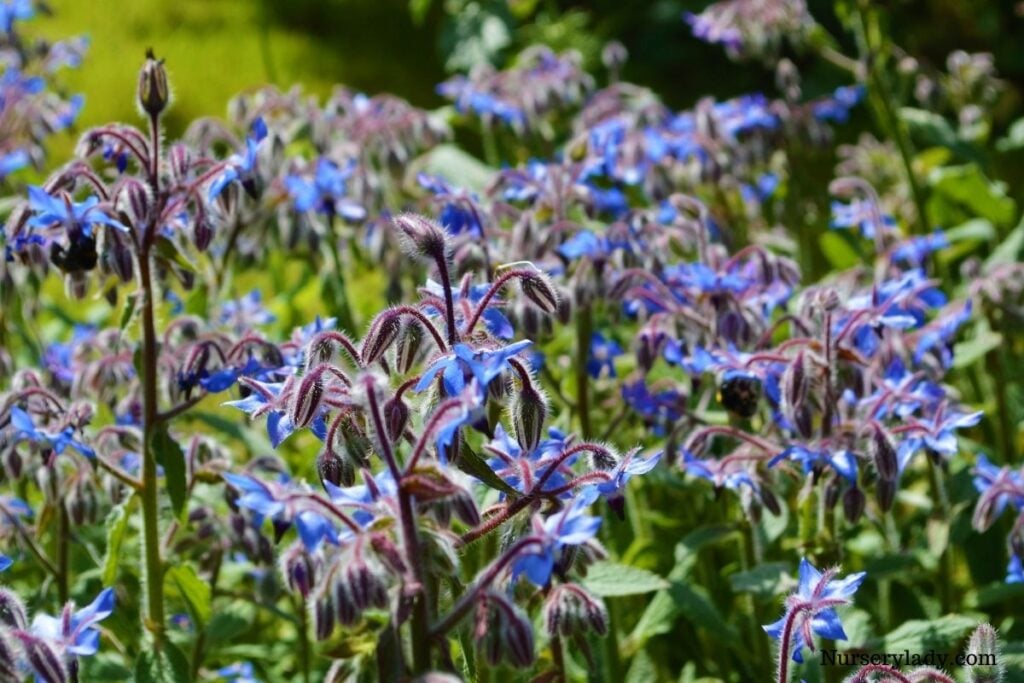
Borage produces star-shaped blue flowers with the scent of cucumbers. They have greenish-gray leaves.
They are commonly grown with vegetables as it attracts beneficial pollinators and improves the vegetable flavor.
Light: Borage lies full sun exposure for best blooms. In low light or shady locations, the plant will not grow and bloom as abundantly as it should.
Watering: Borage needs proper watering while getting established. They prefer evenly moist soil when young to establish roots. Mature plants are drought tolerant and need water when the soil is fully dry.
Fertilizer: Borage can grow well without fertilizers. They will benefit from fertilizer only if the soil is poor. They prefer fertilizer with high phosphorus.
General care: Borage is sturdy and can withstand almost all temperatures. They would struggle in extreme frost though, and need some attention and care. They do not have any specific humidity needs.
Sunflowers
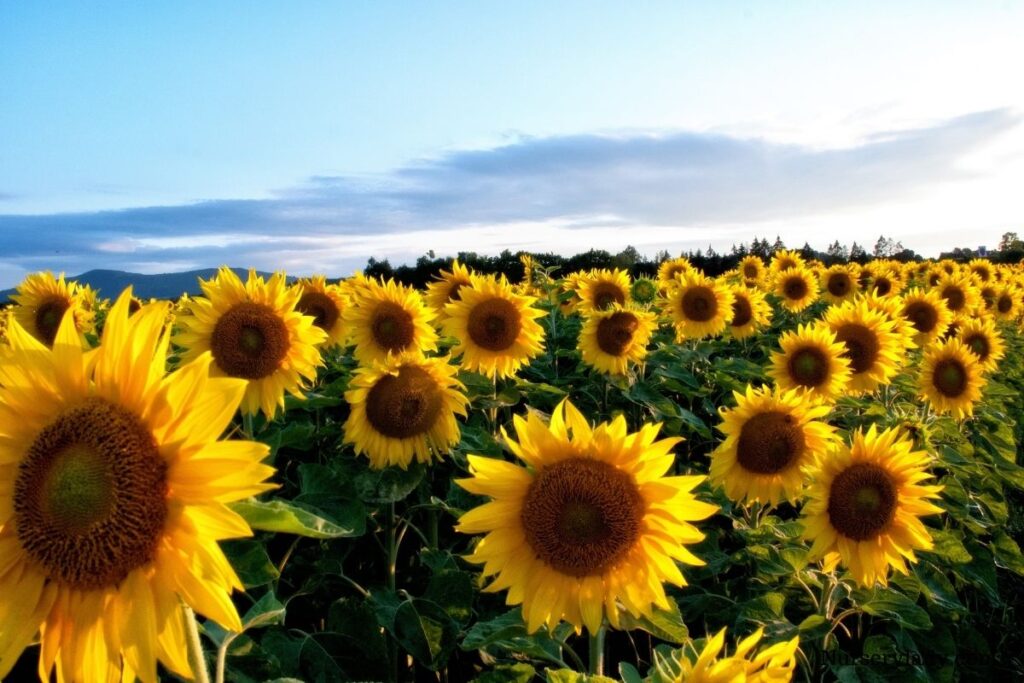
Sunflowers are famous for their exquisite flowers that turn their head with the sun’s movement every day.
They are great companions for vegetables, and they attract pollinators and provide shade to some crops. They are fast-growing and mature within 120 days after the seeds germinate.
Light: Sunflowers are sun-loving plants which means 6-8 hours of direct light each day is required. Low light will lead to droopy branches and fewer blooms.
Watering: Sunflowers can thrive in dry conditions, but consistently moist soil keeps them happier. Drought can reduce flowering, and they droop due to long dry spells.
Fertilizer: Sunflowers will appreciate fertilizer high in phosphorus and potassium to help them set flowers. Plants growing in poor soil need fertilizer throughout their growing months.
General care: Sunflowers prefer temperature levels between 70°F and 78°F. They can tolerate high heat to but with proper watering. They can also tolerate high humidity.
Lavender

Lavender produces fragrant flower spikes with gray-green foliage. They add a few inches of height every year.
They are known for their medical benefits all over the world. They are a great choice to grow with other vegetables.
Light: Lavender grows and blooms best in direct sun. They may not develop well in shady locations and inhibit flowering.
Watering: Lavender needs water in regular intervals when young. Once established, they are extremely drought tolerant and can tolerate long dry periods. Too much watering will encourage root rot and fungal problems.
Fertilizer: Lavender does not need fertilizer, and unnecessary feeding can reduce the potency of the plant. You can add compost while planting your lavender plant.
General care: Lavender can grow in a wide range of temperatures, and they do not appreciate dampness as it can even kill them. Proper air circulation is required if there is high humidity in your area. Also, protect them from harsh cold winds.
Lupines
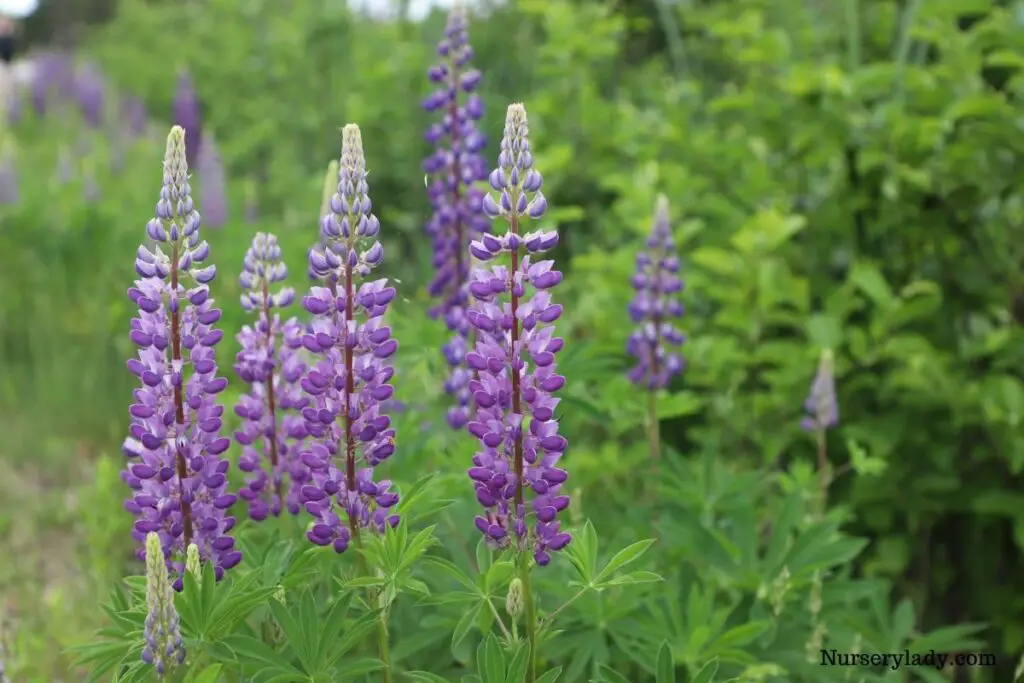
Lupines add color to your garden with their colorful spikes. They are the perfect choice for planting near vegetables that require high nitrogen levels.
They are fast-growing and can also be grown in containers, garden border plants, etc.
Light: Lupines like full sun exposure for at least 6 hours a day. They can grow in partial shade, but flowering will not be as abundant.
Watering: Lupines prefer regular watering but not soggy soil. Too much watering can lead to root rot. Let the soil dry before watering but not completely dry.
Fertilizer: Fertilizing Lupines is not necessary. Fertilizing will promote new growth but inhibit flowering. If grown in alkaline soil, add acidifying fertilizer to lower the soil pH.
General care: Lupines prefer cool temperatures and suffer in high heat, humid climates. Mulching helps them to retain moisture during high heat.
Cosmos
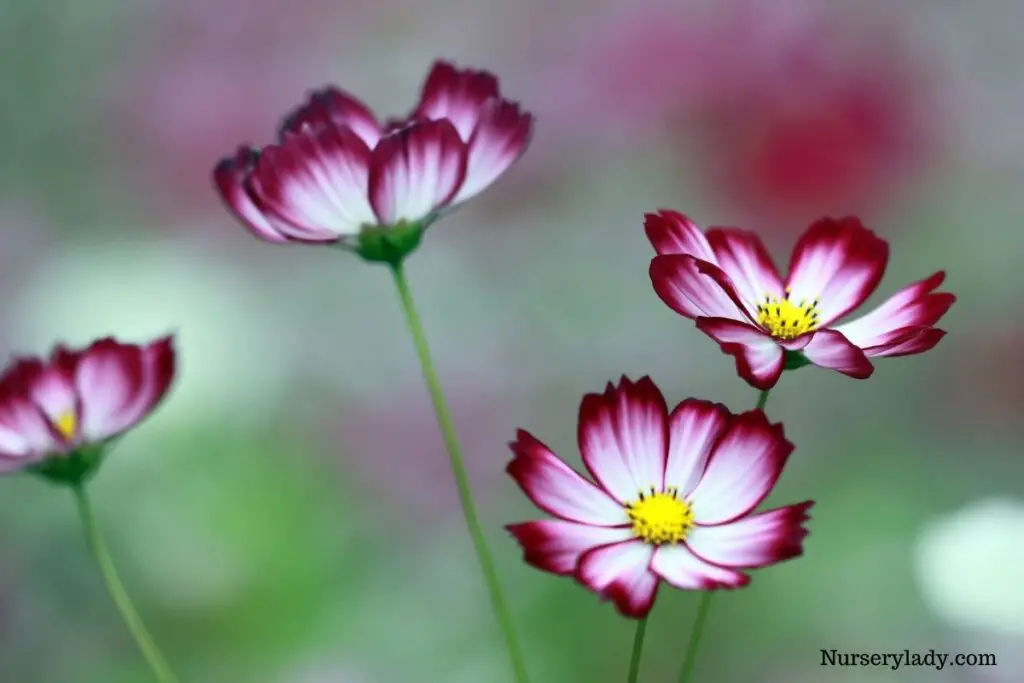
Cosmos produce quintessential flowers that bloom throughout the summer.
They are attractive to beneficial pollinators, which is a perfect way to attract pollinators for your vegetables. They come in a variety of colors and make beautiful cutting flowers.
Light: Cosmos will produce more flowers or get full sun for at least 6 hours every day. They will not grow well and have lesser blossoms in shady locations.
When young, Cosmos may ask for weekly watering, but established plants do not ask for irrigation. They can grow well even in extreme drought.
Fertilizer: Cosmos can thrive without feeding, even in poor soil. Too much feeding will encourage growth but reduce blooming. Fertilize only if you feel the plant is struggling.
General care: Cosmos likes hot temperatures and survives all humidity levels. Trim the faded flowers by one-third and see a longer blooming season.
Comfrey
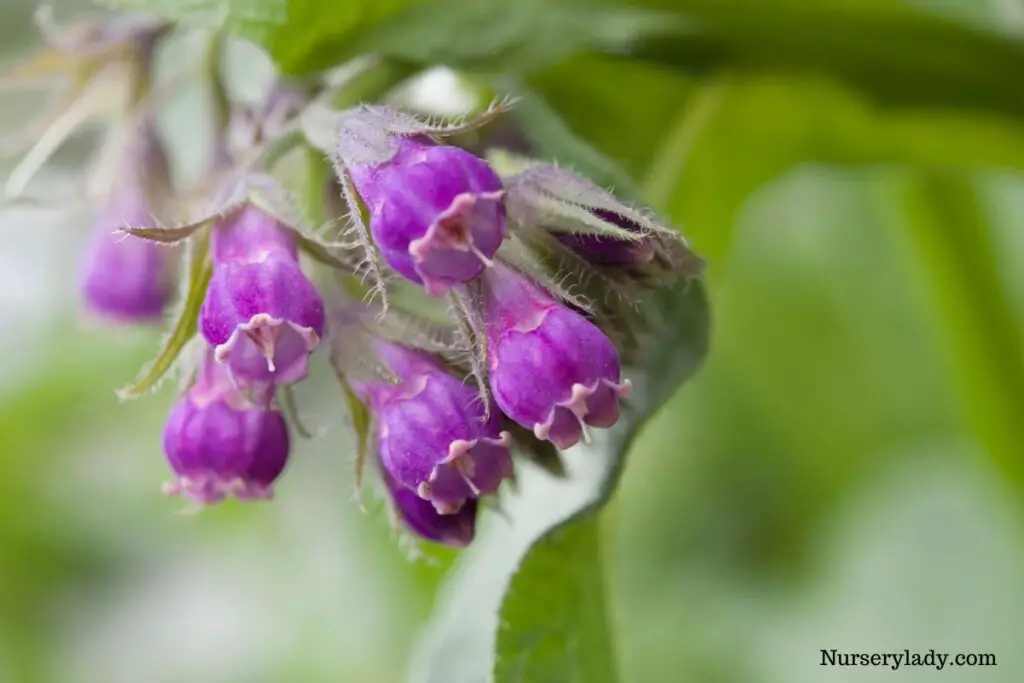
Comfrey has large dark green leaves and clustered flowers. They make a great border plant and also a good companion to vegetables. They attract pollinators and pests, which will save the crops from those pests.
Light: Comfrey grows well in full sun and can survive in partial shade too. 3 hours of full sun on most days will keep them happier. In the hottest months, some shade is good.
Watering: Comfrey appreciates frequent watering and staying moist. Established plants can withstand short periods of drought but will be happier with moderate watering.
Fertilizer: Comfrey appreciates regular organic amendment, like adding compost every spring. Too much feeding is not required as it will only hinder their health.
General care: Comfrey can withstand hot temperatures and cold temperatures. It dies in freezing temperatures, but the roots will be there that will come out in the spring.
Sweet pea
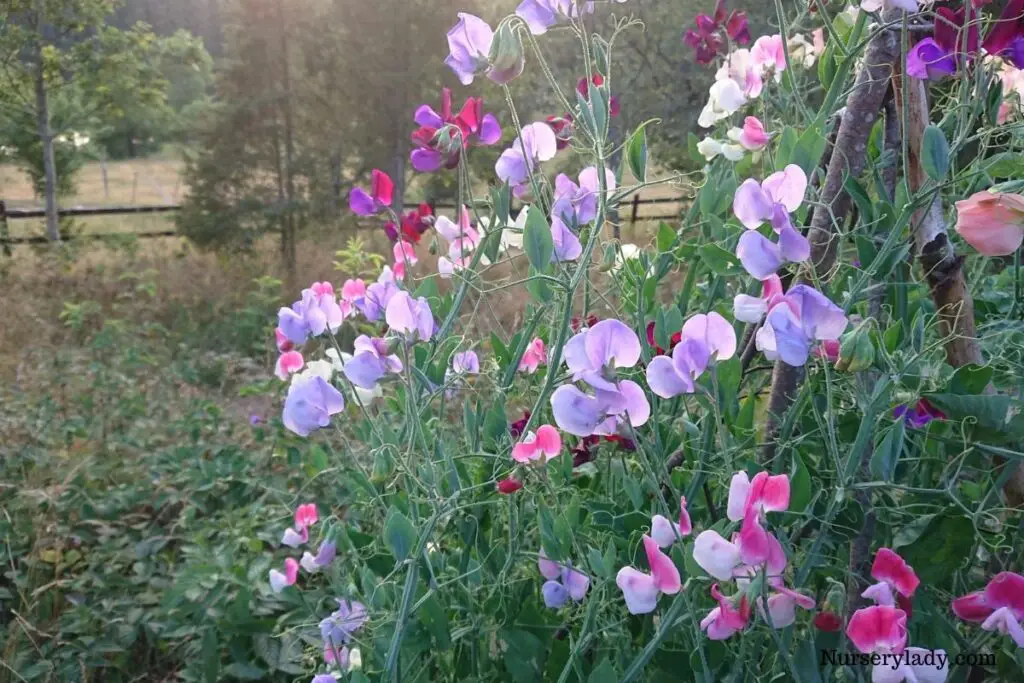
Sweet peas have a colorful, fragrant cluster of flowers. They also make excellent cut flowers.
They reach up to 8 feet tall, which varies with variety. They are low maintenance.
They can be grown in containers or even in the vegetable garden, where they will attract beneficial pollinators.
Light: Sweet peas like full sun and grow in partial shade too. Some shade in hot summer, especially during intense afternoon sun is helpful.
Watering: Sweet peas can be watered regularly to keep the soil evenly moist. They do not appreciate sitting in water. It is best to check the soil before watering to ensure the soil is dry.
Fertilizer: Sweet peas like regular feeding and proper watering. Fertilize with a fertilizer high in potassium throughout the growing season.
General care: Sweet peas like warm temperatures and may suffer from frost. Cut the flowers to get more blooms and deadhead spent flowers for prolonged blooming.
Phacelia
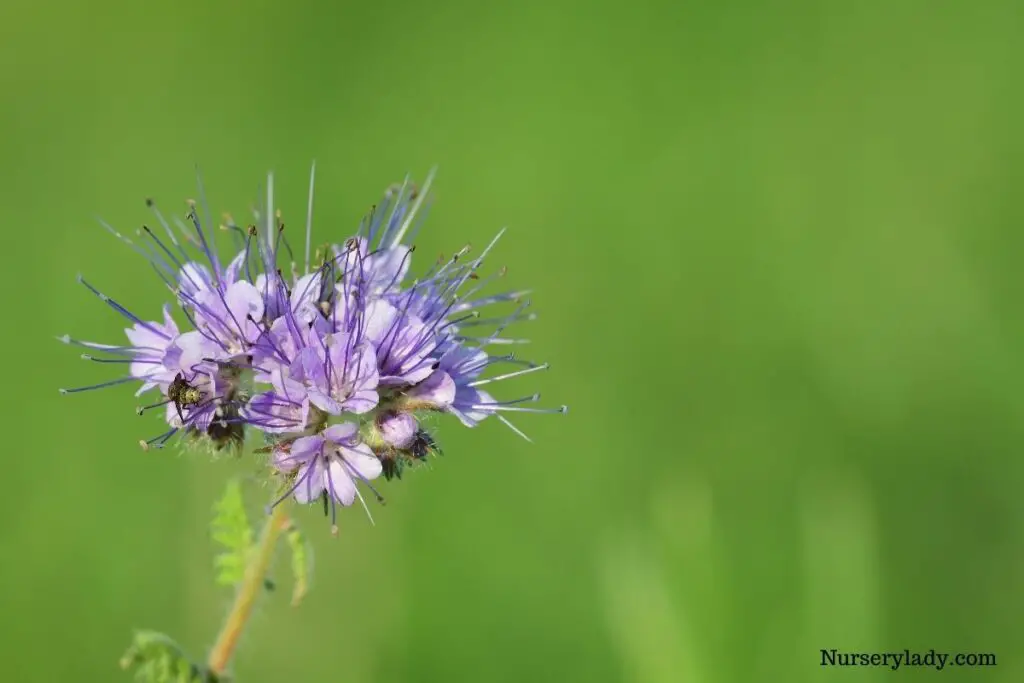
Phacelia is an annual herb that matures up to the size of 40 inches.
They have hairy stems with almost no branches, and the leaves are divided into small leaflets that give a lacy appearance. They produce bell-shaped flowers on long stalks in colors like lavender and blue.
They attract beneficial pollinators, due to which they are also a great choice for growing vegetables.
Light: Phacelia thrives in direct sun and can also grow in partial shade. Please keep them in a sunny spot for the best blooms and growth. Provide shade if the sun is too strong.
Water: Phacelia does not ask for frequent watering but will appreciate evenly moist soil. They are quite drought-tolerant, and overwatering can affect the plant’s growth and health.
Fertilizer: Phacelia are light feeders, but they will benefit from some feeding when grown in poor soil. Use balanced organic fertilizer in the soil in the growing season. Adding organic fertilizer while planting gives the best results.
General care: Phacelia likes warm temperatures and suffers in extreme winters. They can die in temperatures around 18°F. Deadhead to prevent self-seeding.
Zinnias
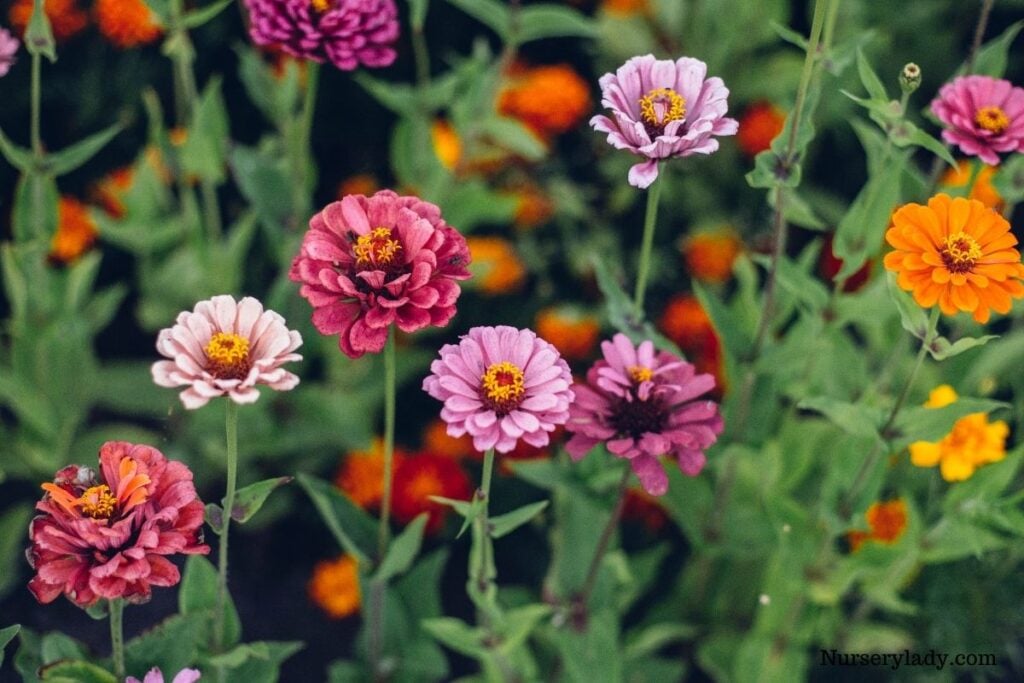
Zinnias produce beautiful rounded flowers in a variety of colors. All the varieties are easy to grow and are fast-growing.
With their beauty, they also attract a beneficial pill due to which it is grown with vegetables. They have lance-shaped foliage.
Light: Zinnias are in the best health and growth when kept in full sun. More light will also help keep fungal problems in place.
Watering: Zinnias can thrive in long dry spells. They do not need supplemental watering and will be the last ones in your garden to ask for a drink.
Fertilizer: Zinnias can be fed with compost which will also help retain moisture. You can also add balanced fertilizer occasionally if the plant seems to be suffering.
General care: Zinnias can wait to thrive in the hot summer. They will keep blooming even in the hottest of summer. Deadheading will prolong the blooming period.
California poppy
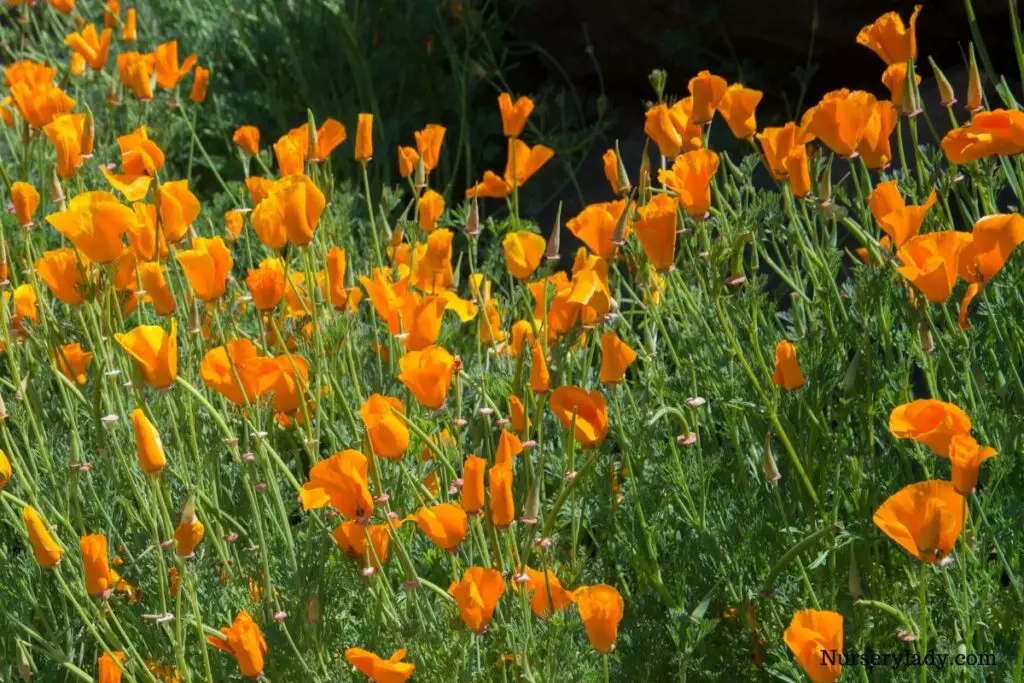
California poppies produce cheerful blooms and fern-like leaves. They are fast-growing and cover large areas.
They attract pollinators, due to which they become a favorite in vegetable gardens. They are easy to maintain and self-sow and bloom for many years.
Light: California poppy blooms and develops best in sunny locations. The more sunlight in a day, the better the growth. Plants were grown in low light become leggy, ragged, and weak.
Watering: Water California poppy only when the soil is fully dry. They are extremely drought tolerant and demand very little water.
Fertilizer: California poppy does not need feeding to grow and bloom. They can grow even in poor soil medium. Feeding with chemical fertilizer will lead to more foliage and fewer blooms.
General care: California poppy prefers temperature levels between 50°F to 75°F. In high heat, they may go dormant and regrows when cool temperatures return. In humid areas, ensure proper drainage and airflow.
Sweet alyssum
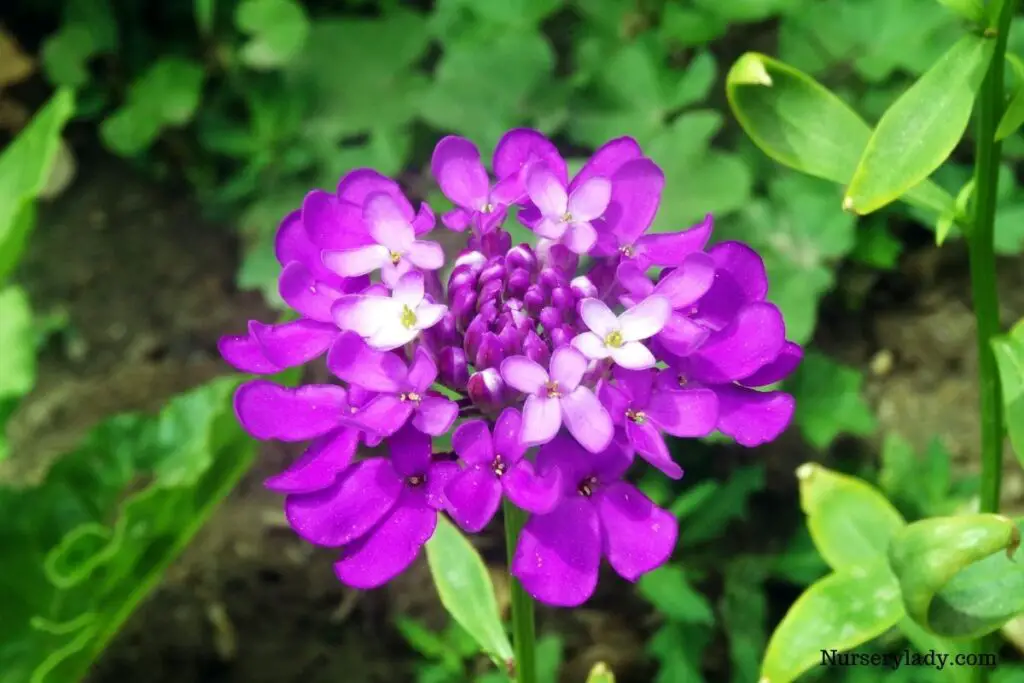
Sweet alyssum produces tiny colorful flowers that blanket your garden or landscapes. They have gray-green foliage in different forms depending on the variety.
Sweet alyssum is easy growing and hardy, and they bloom in cool months after the frost has passed. They are also a good choice for your vegetable garden as they will attract pollinators.
Light: Sweet alyssum thrives in direct sun but with moist soil. Some shade in dry and hot weather is required. The best location for them is where they can get 6-8 hours of light on most days.
Water: Water sweet alyssum with frequent watering to keep the soil moist. During dry spells, keep them well watered and ensure proper drainage. Too much watering can lead to root rot.
Fertilizer: Sweet alyssum does not need fertilizer to survive unless they are growing in poor soil. Plants grown in containers will benefit from balanced fertilizer. Time-release fertilizer during planting will also boost nutrients in the soil.
General care: Sweet alyssum can grow well in a temperate climate and stop blooming in high heat. They can tolerate high humidity but should be compensated with less watering. Deadhead spent flowers to promote new growth.
Reference: The University of Minnesota, Kansas State University, BBC Wildlife Magazine, Arizona-Sonora Desert Museum.
